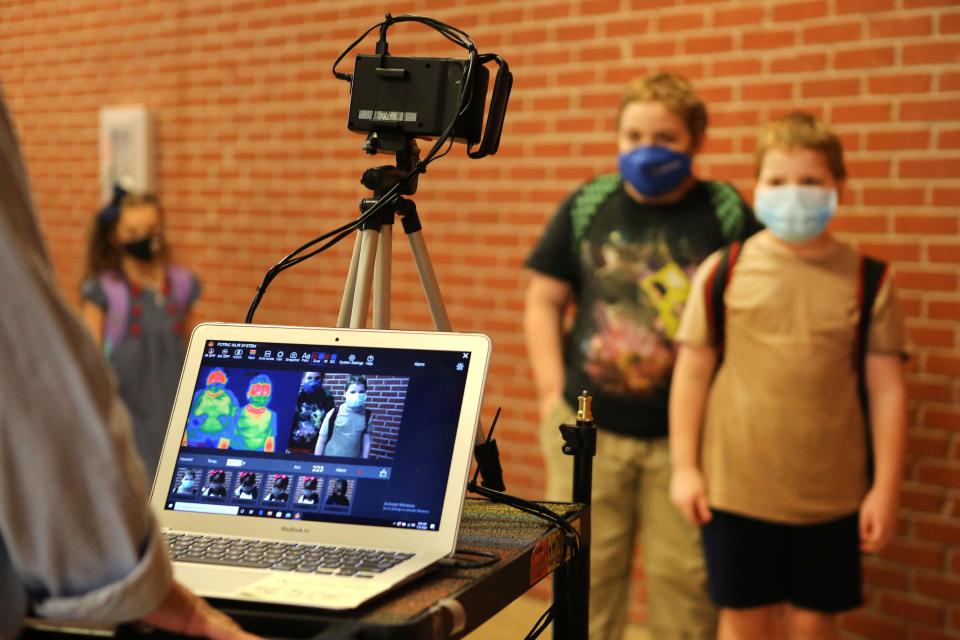Temperature checks: They're inaccurate, and not everyone with COVID-19 has a fever. So why are we still doing them?
Temperature checks are becoming routine as schools, businesses and offices attempt to reopen safely in the midst of a pandemic.
Does this cumbersome practice really keep anyone safe from the coronavirus? The Centers for Disease Control and Prevention estimated last month that nearly 40% of COVID-19 patients are asymptomatic, and experts suspect only half of symptomatic patients exhibit a fever.
Most schools and office buildings use noncontact thermal scanners or thermometers. Though the devices allow someone to measure temperature at a safe distance, experts said there are obvious limitations.
The scanner can read only surface body temperature, which can be inaccurate when determining whether someone has a fever.
“If somebody was out in the heat for a long time, their surface body temperature might read that they have a fever when they don’t have one,” said Natasha Bhuyan, a family physician in Phoenix.
Anthony Fauci, director of the National Institute of Allergy and Infectious Diseases, said in a Facebook Live broadcast with the Walter Reed National Military Medical Center last week that the White House and the National Institutes of Health abandoned temperature checks as they’re “notoriously inaccurate.”

“We have found at the NIH, that it's much, much better to just question people when they come in and save time,” he said.
While office buildings and government agencies are certainly a concern, public health experts also worry about schools as they reopen for in-person learning in parts of the country.
A study published Thursday in the Journal of Pediatrics found children who tested positive for COVID-19 had significantly higher levels of virus in their airways than hospitalized adults in intensive care units.
'Silent spreaders' of COVID-19: Kids who seem healthy may be more contagious than sick adults, study says
When should I get my flu shot this year? Everything to know about flu season during the coronavirus pandemic
Researchers at Massachusetts General Hospital and Massachusetts General Hospital for Children discovered half of the children who tested positive had a fever.
“How likely are you to pick up every case of COVID? The answer is only 50% of the time,” said Roberta DeBiasi, chief of Pediatric Infectious Diseases at Children’s Hospital in Washington.
Doctors said temperature checks should be treated as one of the many tools in the COVID-19 toolbox. Though they can detect fever, they should be paired with additional screening methods and prevention tactics such as monitoring for other symptoms, mask wearing, social distancing and frequent hand-washing.
“Certainly, kids with fever shouldn’t be going to school, but just because the kid isn’t presenting a fever doesn’t mean they don’t have the coronavirus,” said Len Horovitz, a pulmonary specialists at Lenox Hill Hospital in New York City.
Follow Adrianna Rodriguez on Twitter: @AdriannaUSAT.
Health and patient safety coverage at USA TODAY is made possible in part by a grant from the Masimo Foundation for Ethics, Innovation and Competition in Healthcare. The Masimo Foundation does not provide editorial input.
This article originally appeared on USA TODAY: COVID-19: Do temperature checks keep you safe from the coronavirus?

